How to Ripen, Store, and Cook With Pears—Plus, the Most Popular Varieties You'll Find at the Market This Fall
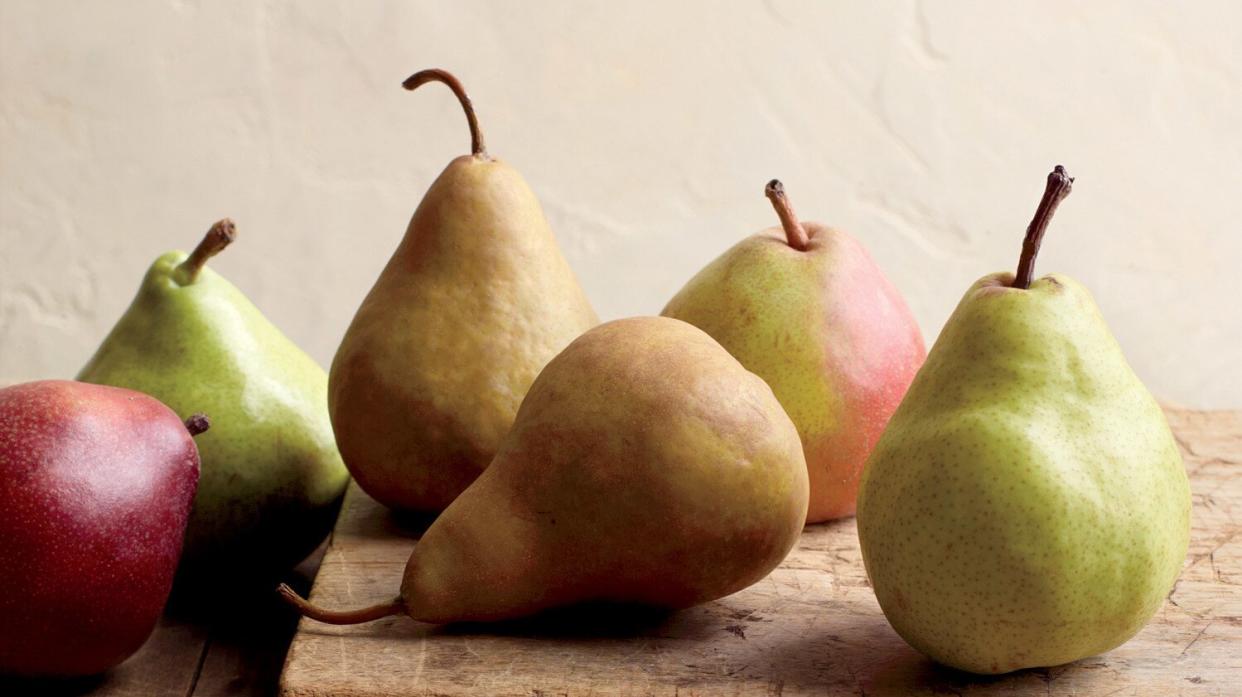
TABLE OF CONTENTS
On This Page
Identifying Ripe Pears
How to Store Pears
How to Cook With Pears
Best Pear Varieties
Autumn brings a new harvest of pears to market. This luscious fruit is somewhat overlooked, but that wasn't always the case. In England, an estimated 700 varieties of pear were grown during the 18th century. In that era, a "pearmania" preoccupied New England's upper classes, and pears were more prized than apples. Perhaps for the ancients, the melting texture of a ripe pear was more appealing than an apple's chew?
And that is exactly where pears are misunderstood. Biting into an unripe pear, when it is hard and granular, may lead you to believe that there is no reason to seek them out. Nothing could be further from the juicy truth. Get to know pears, and you'll love them for their flavor, aroma, juiciness, texture, and sheer versatility.
Related: Our Favorite Pear Recipes
How to Tell If a Pear Is Ripe
The most important thing to know about pears is when they are ripe. "Pears don't ripen on the tree. They are harvested when they are mature—not ripe," says Jim Morris, marketing and communications manager of the Pear Bureau Northwest, a not-for-profit that promotes pears grown in Washington and Oregon, where most U.S. varieties are produced.
There are three ways to identify when your pears are ripe:
Look for a change in skin color—but note that only only a few varieties, like Bartlett, transform this obviously when they are ripe.
Perform a sniff test. Ripe pears smell aromatic, whereas unripe pears don't have any odor at all.
Lastly, try the neck test: The neck of the pear softens and yields to gentle pressure when the fruit pear is ready to eat.
How to Store Pears
Where to Store Unripe Pears
If your pears are not ripe, bide your time—and keep them out of the cold. "The best way to ripen your pears is to store them at room temperature, such as in a fruit bowl on your kitchen counter," says Morris. "If you keep them near other fruits that give off ethylene, such as bananas, this will accelerate the ripening process."
Where to Store Ripe Pears
Only ripe pears should be kept in the fridge. Doing so will extend their meltingly sweet life cycle by a couple of days.
How to Use Pears in Recipes
It seem too obvious to mention, but we're stating it anyway: A perfect pear can easily be served alone and unadorned. You could go so far as to center it on a pretty plate, knife and fork alongside it, for graceful slicing. It makes an unapologetic and confident dessert statement (no apple could pull off this feat!). We recommend Comice or Bartlett for the standalone treatment.
Salads and Cheese Boards
Pears enhance salads and cheese platters, complementing strong flavors like blue cheese and crisp textures like endive and toasted nuts. If you are serving pears raw, be aware that the cut fruit can oxidize quickly. Gently toss pear slices in lemon juice to keep the slices from browning.
Remember that the granular texture in some pears is natural—those are their stone cells, which can be larger or smaller, depending on the pear variety (other fruit, like guavas and feijoa, have a similar texture).
Desserts
In desserts, poached pears are velvety, while baked pears take on a more chewy, caramelized edge. Baked in cakes, their moistness and texture pair deliciously with nut flours, dark chocolate, butter, and caramel.
Popular Pear Varieties
Learn about the varieties of pears you are likely to see at the market during fall—which is the fruit's peak season. Plus, discover their differences and how best to use them.
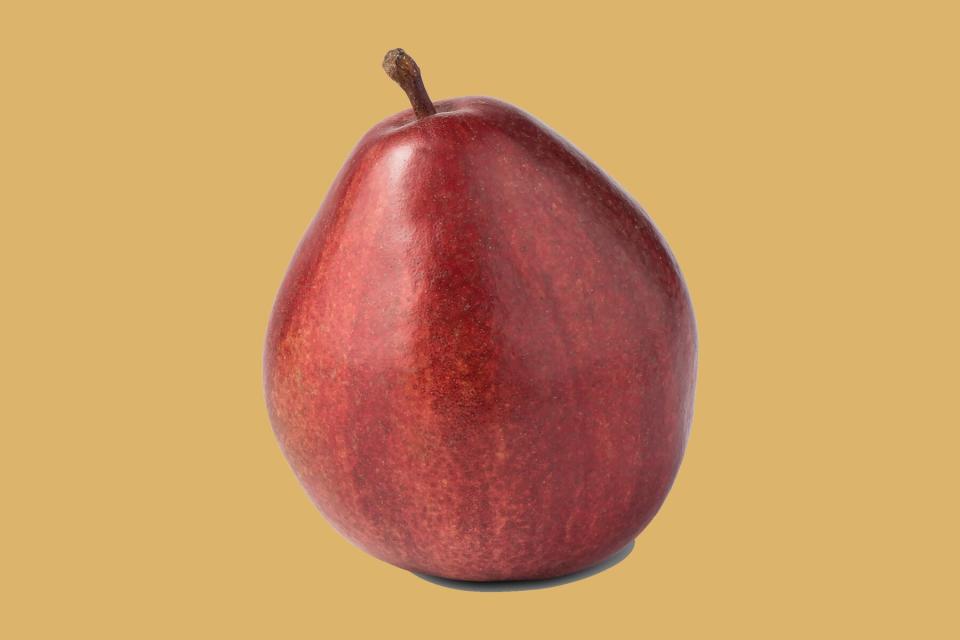
Courtesy of USA Pears
Anjou
Wide-bottomed, egg-shaped Anjou pears have a smooth, spotted skin that does not change color when ripe. Their flavor is mildly sweet and a little lemony; they have a firm texture. Red Anjou pears were developed in Oregon, after a grower discovered a sport (a botanical term for a naturally occurring genetic mutation) on a green Anjou tree. Whether you buy green or red, the pear's flavor is the same.
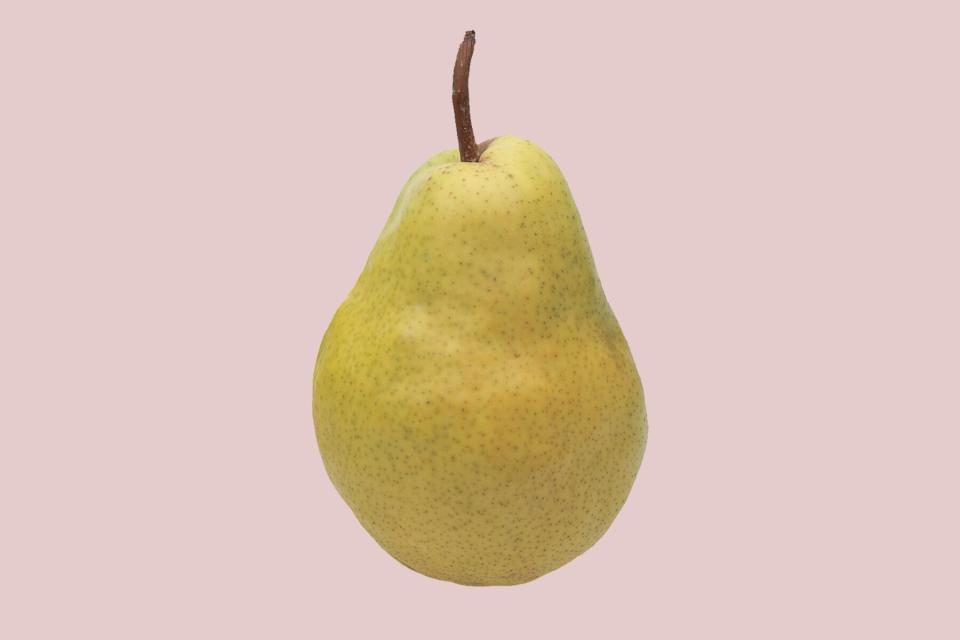
Courtesy of USA Pears
Bartlett (Williams)
Have you ever seen a bottle of clear schnapps called Poire Williams in a liquor store? It's made from these pears, which are called Williams in Europe. (Traditionally, the bottle is placed over a baby pear, which gradually fills the bottle as it grows. The distilled liquor is then poured over it.)
Bartlett pears are an early-ripening variety and have the quintessential pear shape, with a curvaceous bottom and short neck. They are very adaptable and delicious when eaten fresh or cooked; we use them in tarts and baked fruit desserts, like a pandowdy. Choosing red or green Bartletts is purely a question of appearance, although the green will turn yellow as it ripens, making it easier to tell when it is ready.
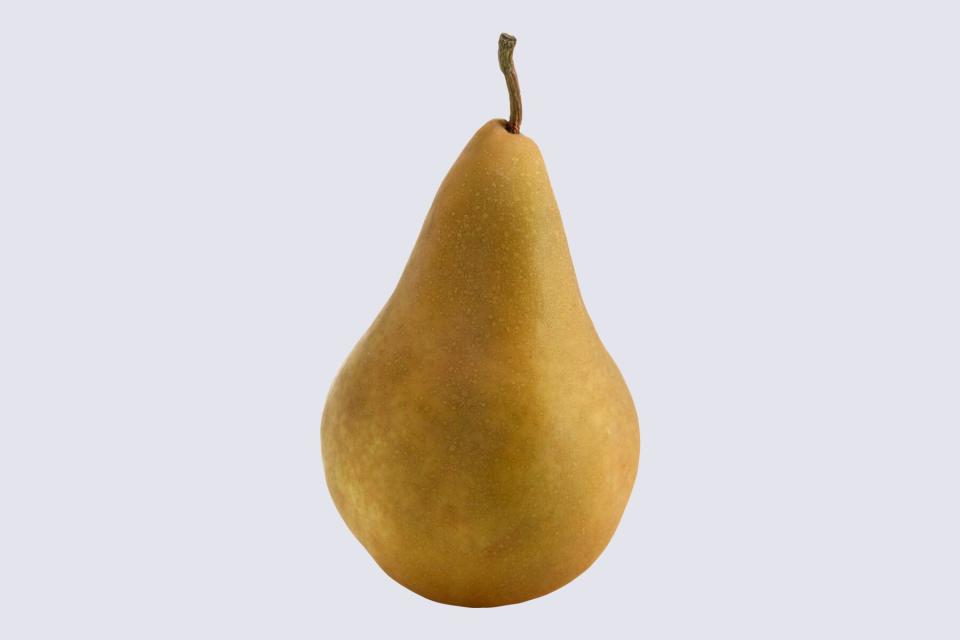
Courtesy of USA Pears
Bosc
Thanks to its long, elegantly tapered neck and textured, bronze skin, the Bosc pear is easy to identify. While a Bosc will turn slightly more golden as it ripens, it remains firm (except at the stem-end). Because of its firm texture when ripe, this is the classic pear for poaching in red wine for dessert. When it is peeled and poached it holds its form, and is easily carved by the edge of spoon. We also use Bosc in our pear crisp.
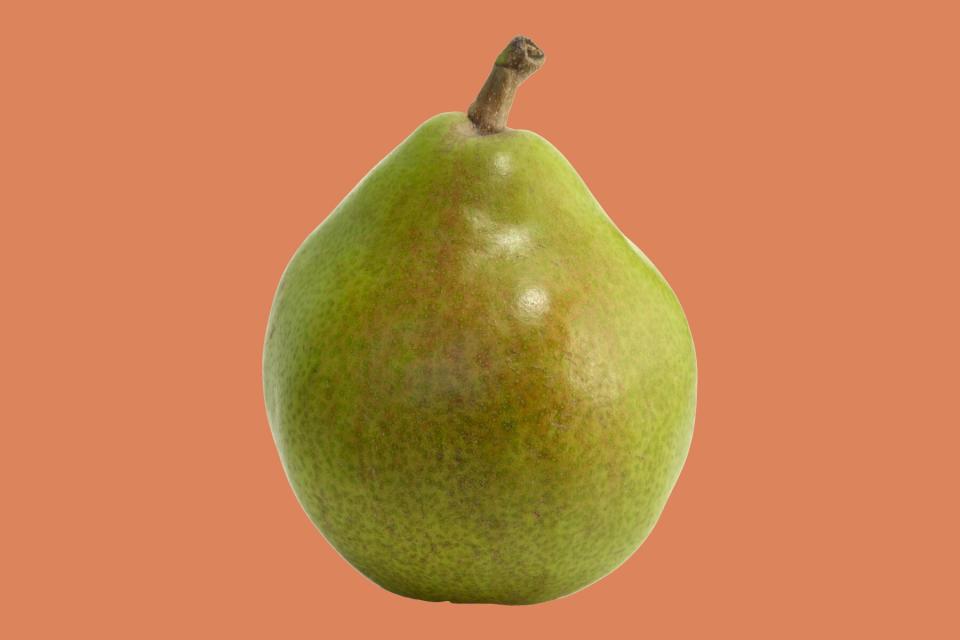
Courtesy of USA Pears
Comice
Smooth-skinned Comice is the dumpiest of pears with a squat body and a short neck, and it claims the silkiest, most juicy flesh. The skin is very fragile when ripe, so Comice pears may look slightly bruised if they are tumbled together. Handle them with care and enjoy them raw; they make great holiday gifts when nestled in a protective box.
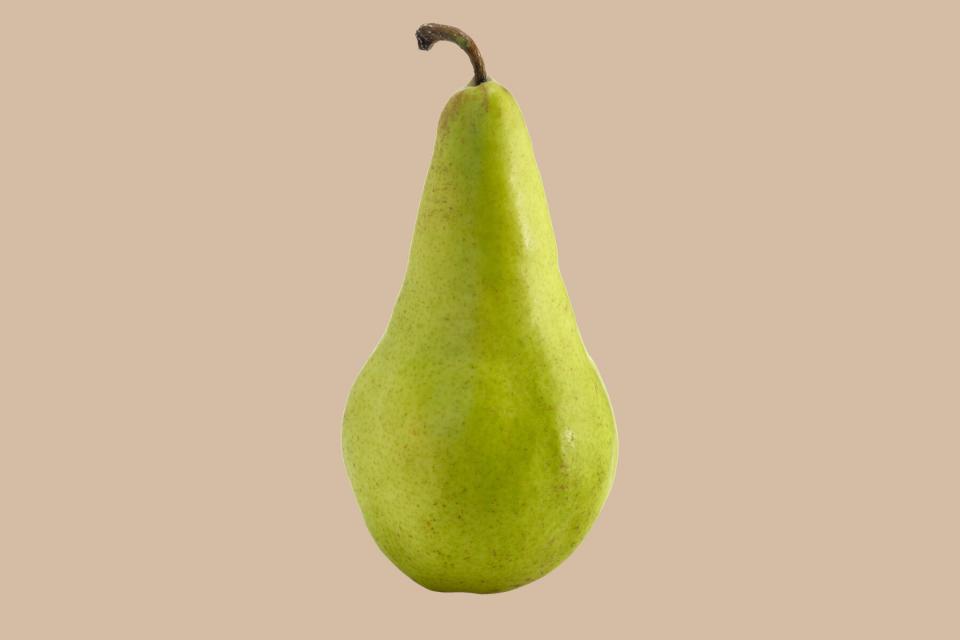
Courtesy of USA Pears
Concorde
With elongated, narrow necks, smooth-skinned Concorde pears are sweet even when they are still firm—and crunchy, too. One of their parents is the buttery Comice, which makes them delicious to eat fresh, but they also hold up well in cooking. Concorde pears are also slower to oxidize than some other varieties, so they can be sliced ahead of time without browning.
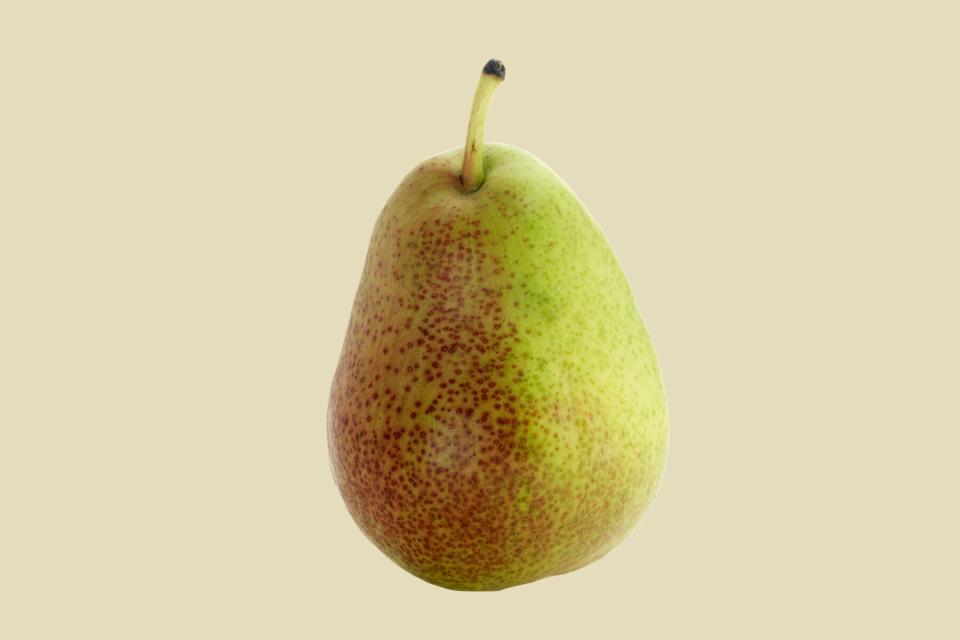
Courtesy of USA Pears
Forelle
Their speckled skin and iconic blush gave these small, bell-shaped pears the name Forelle—the German word for trout. They are one of the few pears to change skin-color when ripe (from green to yellow, with that red cheek). Their texture is dense, crisp, and somewhat coarse, which makes them a great pairing with soft cheese for contrast.
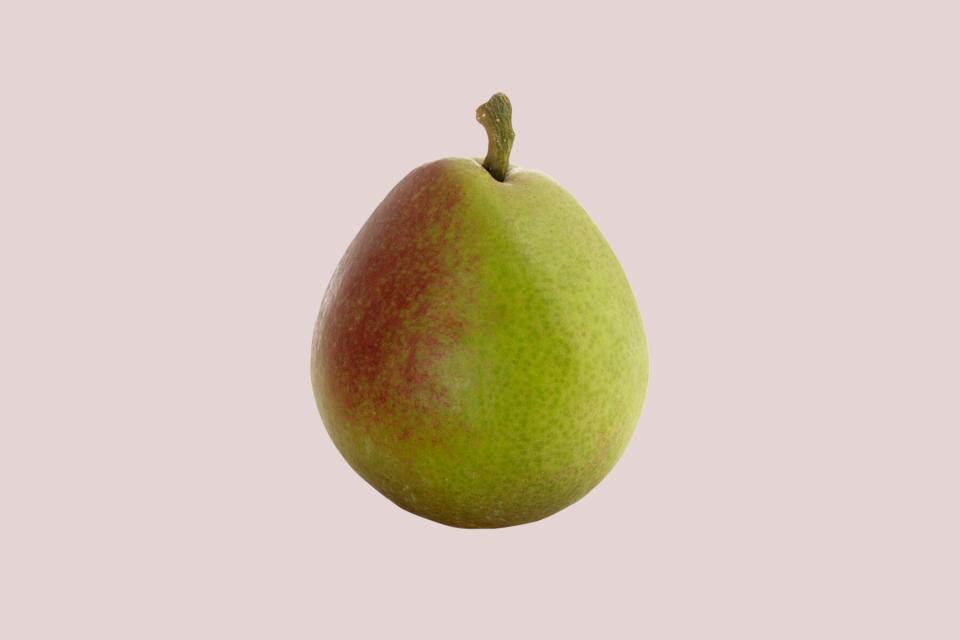
Courtesy of USA Pears
Seckel
The most petite of pears, the Seckel was Thomas Jefferson's favorite when he grew it at Monticello. The olive-skinned, tiny fruits are very sweet when ripe (they are also called sugar pears), with a slightly gritty texture. Roast a clutch of Seckel pears whole for a rustic, but photo-worthy dessert or use them to top a spectacular cake.
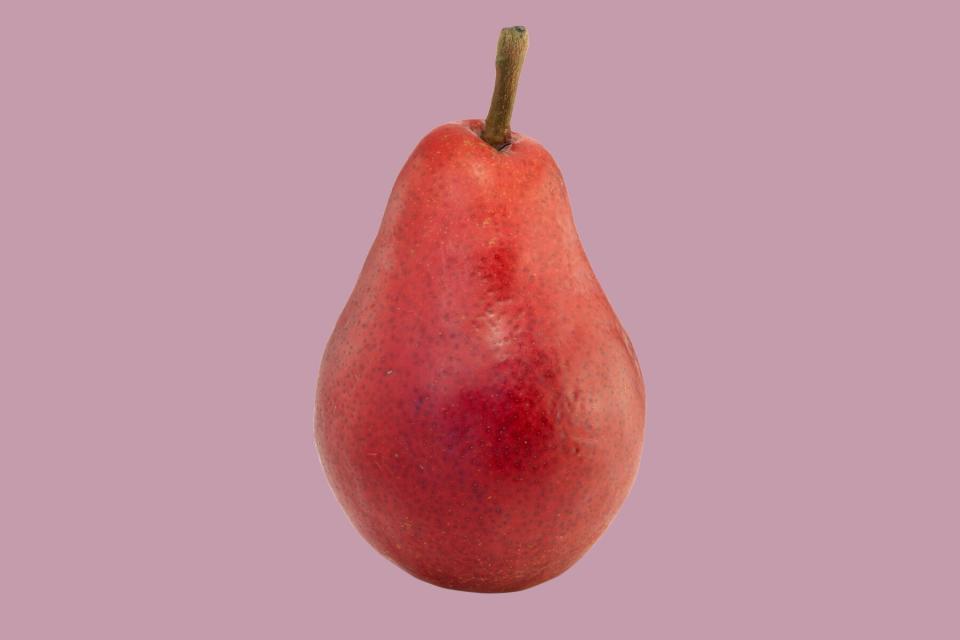
Courtesy of USA Pears
Starkrimson
Dark red Starkrimson pears turn brighter as they ripen, and their skin becomes more delicate. To make the most of their vivid color, use them raw in salads or atop tartines and open-face sandwiches.

